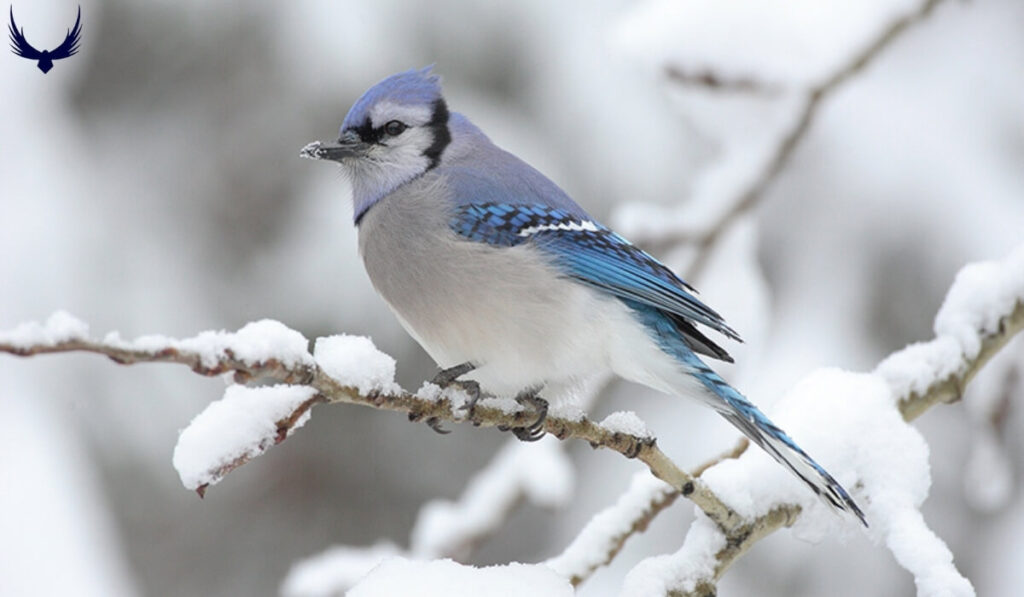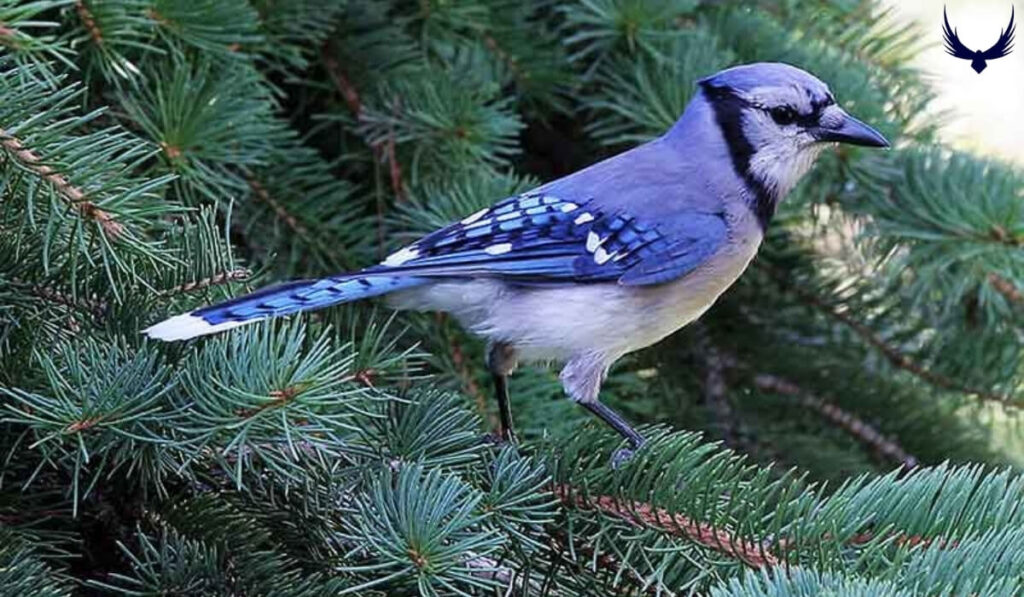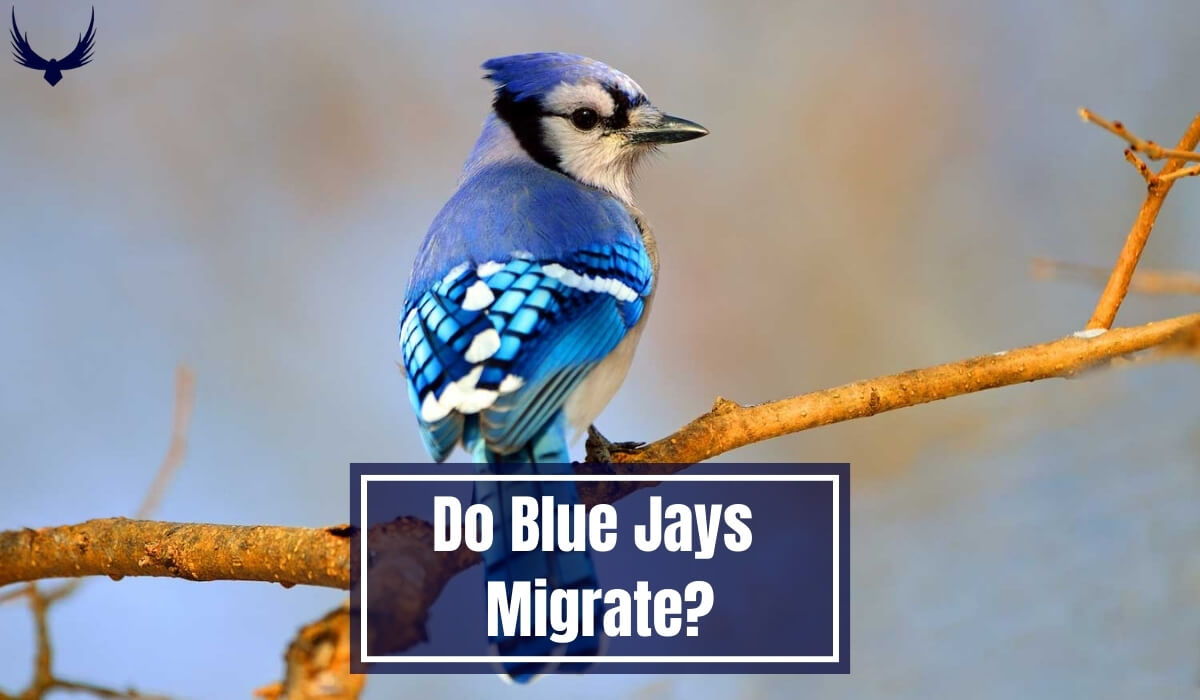Do blue jays migrate, or is it just a myth? Many bird lovers find themselves puzzled by the mysterious comings and goings of these striking blue birds.
It’s like these bright blue birds can’t make up their minds! Some fly souths for a sunny vacation, while others brave the cold at home. But why do they do this? Are blue jays super smart or just confused?
In this article, we’ll solve the mystery of blue jay migration. We’ll find out when they travel, where they go, and why some blue jays decide to pack their bags while others stay put.
Do Blue Jays Migrate?
Blue jay birds are known for their partly migratory behavior. While some blue jays stay in one place year-round, others migrate south for the winter. This migration pattern depends on factors like food availability and weather conditions.

Interestingly, even within the same area, some blue jays may choose to migrate while others remain. Scientists are still studying why individual blue jays make different choices about migration. This unique behavior makes blue jays a fascinating species to observe and learn about.
Do Blue Jays Migrate in the Fall?
Blue jays have a unique migration pattern that starts in the fall. While not all blue jays migrate, some do fly south as the weather gets colder. This happens in September and October.
Scientists think this decision depends on things like how much food is available and how harsh the winter might be. This special migration behavior makes blue jays fascinating birds to observe during the autumn season.
Do Blue Jays Migrate in the Winter?
Blue jays have an interesting migration pattern in winter. Some blue jays choose to migrate south when the cold weather arrives, while others stay in their home territories all year.

This partial migration of blue jays depends on factors like food availability, local climate, and predation. This unique behavior makes blue jays an exciting bird species to watch and study during the winter months.
When Do Blue Jays Migrate?
Blue jays that choose to migrate begin their journey in the fall. This migration starts in September and can continue through October. However, not all blue jays migrate; some stay in their home areas all year round.
The exact timing can vary depending on factors like weather patterns and food availability. This flexible migration schedule makes blue jays an exciting bird species to watch throughout the changing seasons.
Where Do Blue Jays Migrate To?
Blue jays that migrate travel south for the winter. They often move from the northern parts of North America to the southern United States. Some blue jays may fly as far as Florida or the Gulf Coast states. However, they don’t usually cross the Gulf of Mexico like some other bird species.

The exact destination can vary depending on factors such as food availability and weather conditions. Blue jays don’t always migrate to the same place every year, making their travel patterns unique and unpredictable.
Why Do Blue Jays Migrate?
Blue jays migrate for several reasons. The main cause is food scarcity during winter in their northern habitats. As insects become less available and nut-producing trees are covered in snow, some blue jays fly south to find more food.
They also migrate to escape harsh winter conditions and find warmer areas. However, not all blue jays migrate, and those that do return to their original homes in spring when food becomes plentiful again.
How Far do Blue Jays Migrate?
Blue jays that choose to migrate can travel quite far, but their journeys vary. Some blue jays might only move a short distance, perhaps just a few hundred miles south. Others can fly much farther, traveling up to 1,000 miles from their summer homes.

The exact distance depends on factors like food availability and weather conditions. Blue jays don’t cross large bodies of water during migration. Instead, they tend to follow land routes, moving gradually southward.
Do Blue Jays Migrate South?
Blue jays do migrate south, but not all of them do. Some blue jays choose to fly south for the winter, while others stay in their home areas all year. This is called partial migration.
The blue jays that do migrate travel to the southern United States, seeking warmer weather and more food. However, their migration patterns can be unpredictable. Even blue jays from the same area might make different choices about migrating.
When Do Blue Jays Migrate South?
Blue jays that migrate south, begin their journey in the fall. This southward migration usually starts in September and can continue through October.

Some blue jays might leave earlier if conditions are harsh, while others may delay their trip if food is still plentiful. This staggered migration schedule makes blue jays an exciting bird species to observe throughout the autumn season.
FAQs – Do Blue Jays Migrate
Do Blue Jays Migrate from Michigan?
Blue jays in Michigan exhibit partial migration. While some blue jays remain in the state year-round, others migrate south for the winter. This behavior depends on factors like food availability and individual bird preferences, making blue jay migration patterns in Michigan somewhat unpredictable.
Where do Blue Jays Go in the Winter?
In winter, many blue jays from northern regions migrate south to warmer areas. They often travel to states in the southeastern United States, such as Florida, Georgia, and the Carolinas. However, some blue jays choose to stay in their northern habitats year-round if they can find enough food.
When do Blue Jays Come Out?
Blue jays are most active during daylight hours in the early morning and late afternoon. They come out to feed, socialize, and defend their territory from sunrise to sunset. In spring and summer, blue jays are visible as they become more active for breeding season.
Does a Blue Jay Migrate?
Blue jays exhibit partial migration, meaning some birds migrate while others don’t. Whether a blue jay migrates depends on factors like food availability and individual preferences. Those that do migrate usually travel south for the winter, while others remain in their year-round habitats, adapting to colder temperatures.

